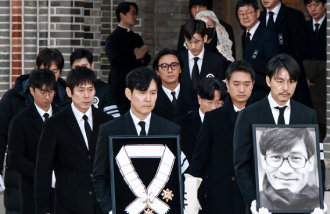Josee and Kumiko
Josee and Kumiko
Posted June. 19, 2019 07:32,
Updated June. 19, 2019 07:32

Artists often get inspired by their colleagues to appropriate new values creatively. One of such artists is Seiko Tanabe, who writes an original novel with the same title as a popular Japanese film “Josee, the Tiger and the Fish.” She borrowed names of figures in Francoise Sagan’s novel “Dans un Mois, Dans un An” to express deeper insight into disabilities. Josee in Sagan’s novel is a 25-year-old woman who is young, rich and confident. She may not seem to have a lot in common with Kumiko, described by Tanabe as Josee, who is a paraplegic patient living on government subsidy, except that they are of similar age. Nevertheless, it is not true in some sense. The reason why Kumiko wants herself to be called Josee is that she aspires to be as confident as she is.
Kumiko is illustrated as a woman who lives a confident life although she gets help due to her disabilities. She hates those who see people with disabilities as incomplete beings and feel sympathetic, which only leaves them scarred with a sense of humiliation. Thus, she behaves in exaggeratively high-handed manner. In particular, she is mean and grumpy to her boyfriend. It is the author’s message that love does not equal pity. Kumiko thinks that she is willing to accept breaking up with her boyfriend even though it is not sure when he leaves her. It shows her determination that she will not let disabilities hold back anyone including her. It may be all thanks to her strong confidence that she leans in her boyfriend’s arms being scared of a tiger’s eyes at a zoo and feels happy seeing fish at an aquarium. In this sense, there is a similarity between Kumiko and the Sagan-described Josee who gives her youth to blinded love.
Kumiko – Josee, perhaps – makes it clear that she refuses to be a subject of sympathy or pity and considers herself to lead her way of behavior and thinking in her life. This means that humanity comes before disabilities and those with disabilities should not be defined as their illness but treated as complete individuals. Kumiko shows the greatest example of focusing on limits of sympathy and pity while contemplating on disabilities in warm-hearted and considerate manner.
tjdrud0306@donga.com




![반찬통 착색 고민 끝…‘두부용기’ 버리지 말고 이렇게 쓰세요 [알쓸톡]](https://dimg.donga.com/c/138/175/90/1/wps/NEWS/IMAGE/2026/01/09/133126593.3.png)

![“생수병, 버리지 말고 자르자”…주방 밀폐 용기 끝판왕 [알쓸톡]](https://dimg.donga.com/c/138/175/90/1/wps/NEWS/IMAGE/2026/01/06/133101939.3.png)
